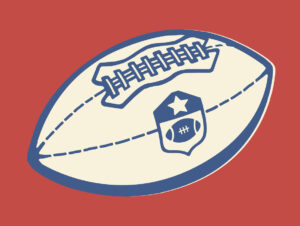By the Numbers: Where Americans got election news
TV is king.

The dust is settling from the 2024 U.S. elections. The news environment that surrounded the ballot casting was, in many ways, as contentious as the election itself, with rows about endorsements, debates about covering Trump’s firebrand of politics and more taking center stage and dividing both journalists and consumers.
But amid all those controversies, where did Americans get the news that helped inform their voting decisions? Even though the most intense period of interest in politics may have passed for another few years, understanding the news sources Americans use to help make big decisions can likewise help PR professionals better target their pitches.
Research conducted by Pew Research in September sheds light on the most popular political news sources. Here’s what PR pros should know.
Other and none
In this survey of 8,000, respondents were allowed to name any sources they chose. The open-ended nature of the survey means that the top two responses weren’t a network at all – they were people listing sources too unique to be listed in the overall findings or they didn’t list a primary source at all.
Nearly a third of respondents chose a niche outlet as their primary source, putting their responses into the “other” category.
This should be a massive wakeup call to PR professionals. Long gone are the days that a front-page newspaper hit or a mention on the nightly news would make your brand. Instead, people are looking to a plethora of different sources that more precisely fit their news wants and needs. Pew Research did not share precisely what these “other” were, but if you’re curious, just ask a friend. Or better yet, ask your target audience. The myriad sources they name will show just how dizzying the media landscape will be – and just how savvy communicators must be to wade through it to find the most meaningful sources.
The second largest category in the survey was people who did not name any main source. Again, we don’t know exactly what they said here. It could have been “I don’t follow the news” – a Pew Research poll from 2023 found that about 9% of Americans don’t follow the news at all, a number that very much could have increased in the last year as the news became more acrimonious.
Or it could be pointing to another problem with the news media: a lack of name recognition. As more and more Americans cite sources like “social media” as where they get news, the exact journalists behind that work can fade into the background, struggling from poor branding until all journalistic content seems homogenized in a tweet or a TikTok.
Regardless, the fact that nearly half of Americans are in their own media bubbles – or none at all – should ring loudly in the ears of media relations professionals.
What people pay attention to
Among those respondents who chose a news source, television reigns supreme. Of the top 10 named news sources, seven are TV stations, and all of the top five.
The most popular news sites for political news are:
- Fox News (13%)
- CNN (10%)
- Local TV (6%)
- ABC News (5%)
- NBC News (3%)
- NPR (3%)
- MSNBC (3%)
- The New York Times (3%)
- CBS News (3%)
- X/Twitter (2%)
In other words, a full third of Americans list a television news source as their primary way of getting political news.
This is not to say that they aren’t also getting news from local newspapers or influencers or the Wall Street Journal. Only that their top choices tend to gravitate toward television.
What is ‘the mainstream media’
Since Trump burst onto the political scene in 2015, there has been a great deal of discussion about “mainstream media.” What is it, is it bad, is it biased against Republicans. Pew Research asked about whether Americans consider their news source of choice to be part of the mainstream media. And overwhelmingly, the answer is “yes.”
Whether it’s MSNBC on the left end of the political spectrum or Fox News on the right, the majority of both stations’ viewers say they’re mainstream (88% and 61% respectively). Only 57% of viewers said that local TV was mainstream media, only 8% said it wasn’t – the remaining 34% said they weren’t sure. Of course, this is to be expected when dealing with a nebulous term like “mainstream media” which is entirely in the eye of the beholder. Is anything not on national television “mainstream news”? Or is it the prominence, prestige and power of a news source what makes it “mainstream”?
There is a strong political divide here. While 60% of all respondents said their favorite news source is mainstream media, only 48% of Republicans agreed, compared to 72% of Democrats. This is understandable given President Elect Donald Trump’s antagonism toward the mainstream media.
Regardless of political party, this survey shows a deeply fractured media environment with few clear winners. Clever PR professionals must truly understand their target audiences on a deep level to choose the right outlets – because there is no one size fits all.
Allison Carter is editor-in-chief of PR Daily. Follow her on Twitter or LinkedIn.







